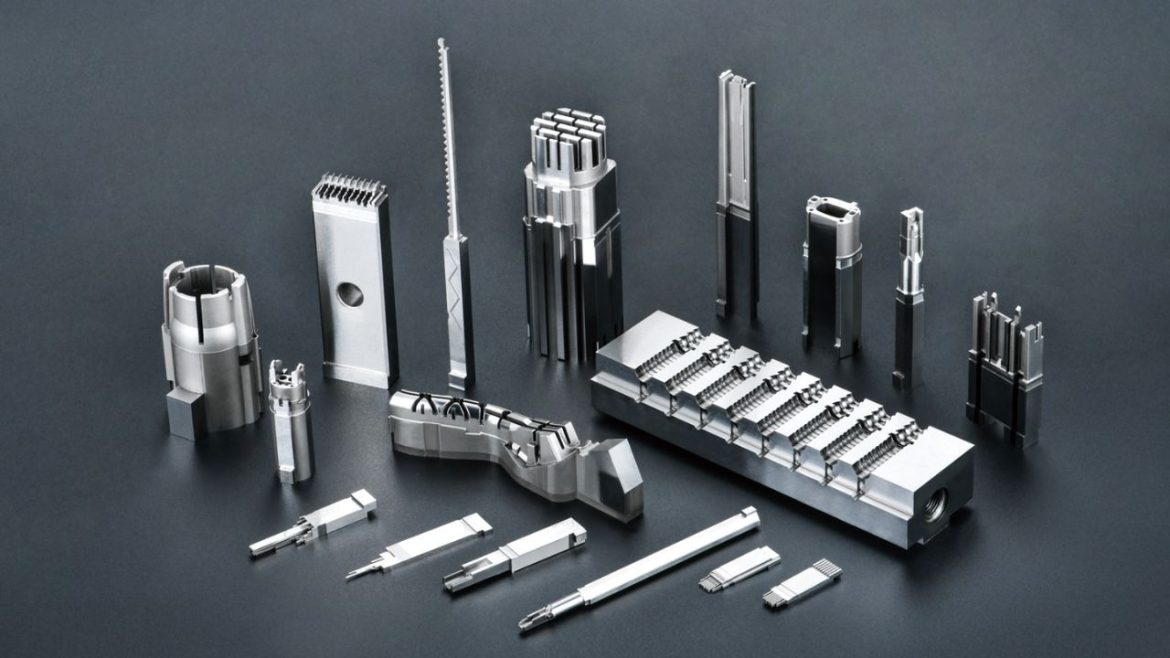Even in the context of defect-free manufacturing, where even a few millimeters can spell the difference between the success and failure of the achieved mold, high-accuracy machining technologies are indispensable. Of these, optical curve profile grinding has been made one of the most superior and trusted procedures to create perfect components of the molds. Firms such as Langdi Precision have mastered precision grinding services, enabling manufacturers to achieve exceptional levels of accuracy and produce molds of the highest quality and performance.
Understanding Optical Curve Profile Grinding
PG machining, also known as optical curve profile grinding, is a very specialized operation that is utilized to machine complex forms and contours on precision parts. It uses an optical projector system to enlarge the profile of the component, and the operator can attain precision at the sub-micron level. It is a technology that is especially useful in the shaping and finishing of complex die components, carbide punches, and inserts that are involved in the electronics industry, automotive industry, and connector terminal industries.
It is the visual accuracy mixed with mechanical accuracy. With the optical magnification, the operator is able to follow the entire grinding process in real time to make sure that all the curves, edges, and contours are completely accurate according to the design specifications. Machines like the Japan-based AMADA PG have proved to be reliable in terms of tolerances as low as +-0.001mm and surface finishes up to Ra0.05 smooth.
Achieving Unmatched Accuracy and Surface Finish
Among the most critical benefits of optical curve profile grinding, it is possible to note that it provides a unique dimensional accuracy and quality of surfaces. In the case of manufacturing molds, all the details count. The graining exercise removes flaws that might result in defects in products or early wear of the molds. This technology produces a smoother surface finish, which results in enhanced part release, increased mold life, and less maintenance.
Langdi Precision employs the latest AMADA PG equipment to machine complicated shapes on carbide parts, and each shape and form is retained even in the worst situation of manufacturing. The products of this mold are extremely stable and have high performance, which is directly converted into greater efficiency and quality of the products for the clients.
Enhancing Mold Longevity and Performance
Molds experience extreme pressure, temperature, and repeated operations during their service life. Mechanical strain and ultimate breakdown can be caused by the slightest fault or dimensional variation. Optical curve profile grinding is one of the tools that can solve these issues and offer high-quality precision and alignment. Every component is tailored to fit and be in constant contact with the other components when at work, and this creates a smoother and efficient operation of the whole mold assembly.
In addition, the carbide materials are also machined to ultra-precision, and this factor is also attributed to the wear resistance of the mold components. This reduces the friction and deformation during the course of use to ensure that the molds retain their shape and performance in the long term. Some of the benefits that manufacturers who apply this technology are able to expect are longer life cycles of molds and increased uniformity in production output, not to mention decreased downtimes.
The Role of Technology and Expertise
Although the machinery is crucial, expertise that runs the process is necessary as well. Langdi Precision is using the most updated PM grinding with the use of experienced technicians who appreciate the subtleties of the geometry of the mold components. The combination of human skills and high technology can enable the company to achieve high tolerances and provide clients with customization solutions that match their needs.
Other machining technologies integrated by Langdi, like precision surface grinding, WEDM (Wire Electrical Discharge Machining), and CNC high-speed milling, also add to its capacity to manufacture complete high-performance mold systems. But it is the optical curve profile grinding which is the basis of its reputation for ultra-precision and reliability.
Conclusion
Perfection of mold components is not only a dream in the present competitive manufacturing environment, but it is also a must. The core of this endeavor is the use of optical curve profile grinding, which helps manufacturers such as Langdi Precision to produce components that are accurate, durable, and smooth at the same time. All curves and shapes are cut with a precision that has never been reached before through this technology, making molds work smoothly and give better results. In industries that require accuracy of tooling, be it electronic, automotive, or metal stamping, Optical curve profile grinding is not a process, but the key to perfection. Langdi Precision remains a model of how even ordinary components can be made into masterpieces of precision-engineered Japanese machinery, with the help of a skilled craftsman, which can become the future of mold manufacturing.
